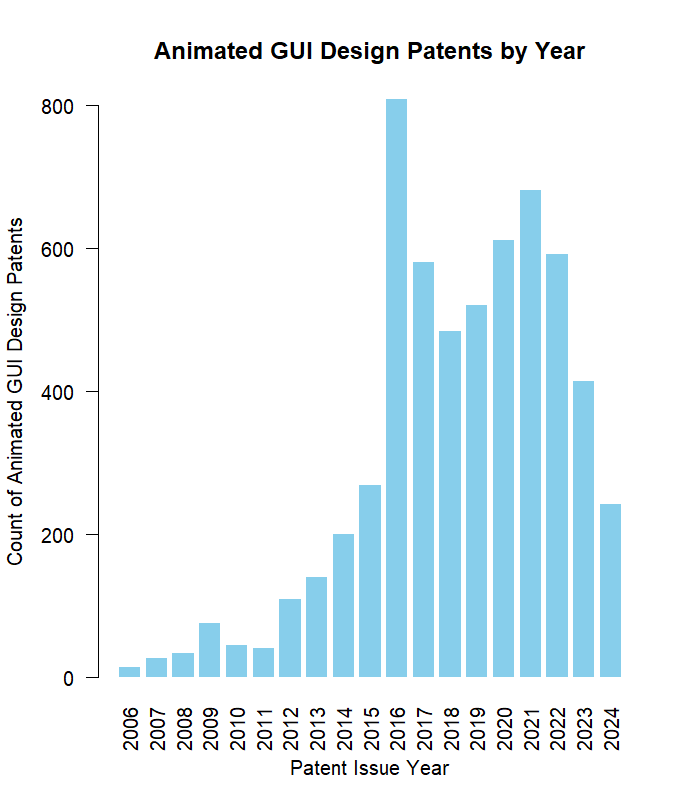For several years, the most controversial part of the design patent world was patenting of portions of a display screen. But, things have moved forward with a steady flow of animated portions of a display screen. The chart above shows the year-over-year numbers of design patents issued claiming some form of an animated or transitional display.
To continue reading, become a Patently-O member. Already a member? Simply log in to access the full post.
